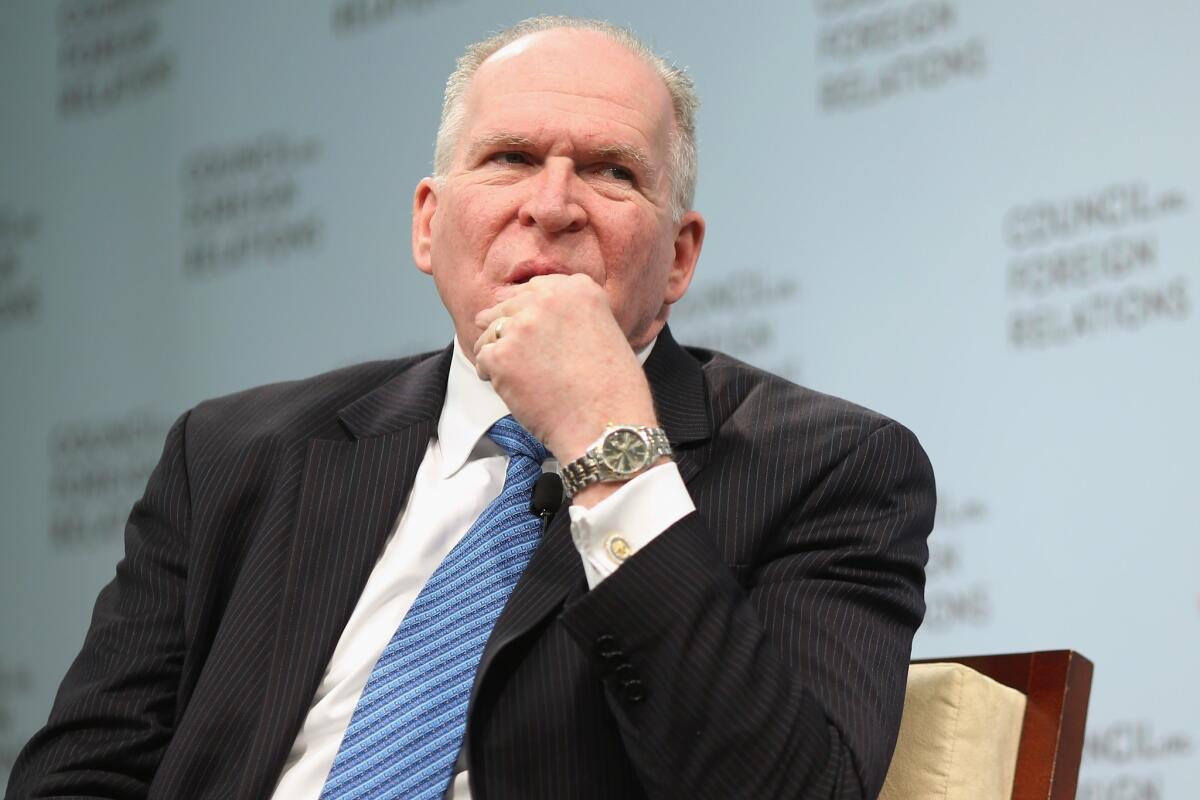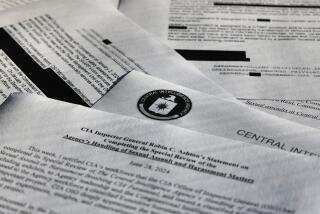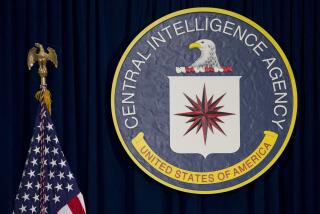CIA to create a digital spy division

Reporting from Langley, Va. — After more than a decade of hunting terrorists, stopping plots and scrambling from crisis to crisis, the CIA has concluded it has been outflanked and outwitted on a critical front: digital tradecraft.
On Friday, the CIA acknowledged that it was time to move into the 21st century, saying it was creating a special division to conduct cyberespionage.
Along with crunching data to help identify and approach new spies to recruit, the CIA hopes to improve its ability to trace the “digital dust” that potential targets leave during activities such as using an ATM card, renting a car or moving through a city with a cellphone.
Rival spy agencies use those digital fingerprints to help track CIA operatives, and the agency wants to find techniques to help officers working undercover hide their tracks online.
“The digital world touches every aspect of our business,” CIA Director John O. Brennan told reporters at CIA headquarters here. He acknowledged that the agency had been slow to adapt to the challenge.
The restructuring at the CIA comes after U.S. intelligence was caught off-guard by a series of high-profile digital attacks, including North Korea’s destruction of computer systems at Sony Pictures and an Iranian-launched cyberassault on Las Vegas Sands Corp., the world’s largest casino company, both last year.
James R. Clapper, the director of national intelligence, warned Congress last month that cyberattacks posed a greater long-term threat to national security than terrorism.
The Pentagon, FBI and Department of Homeland Security have stepped up cybersecurity operations, and the White House last month announced a new agency to help analyze and share digital threat information between government and business.
The new CIA division will be called the Directorate of Digital Innovation. It will have the same level of authority as the four long-standing directorates responsible for clandestine operations, analysis, spy gadgetry and logistical support.
“We must place our activities and operations in the digital domain at the very center of all our mission endeavors,” Brennan told the CIA workforce on Friday.
The new focus threatens to put the CIA in direct competition with the mammoth National Security Agency, which specializes in breaking codes, vacuuming up conversations and communications, and analyzing huge troves of digital transmissions. The Pentagon’s Cyber Command is responsible for launching digital warfare.
U.S. intelligence is both at the forefront, and a leading target, of hack attacks. The CIA long has barred people from bringing smartphones, portable hard drives and other digital devices into its headquarters to prevent people from copying or corrupting sensitive files.
Those fears were reinforced when Edward Snowden, a former CIA employee who went to work for the NSA as a contractor, copied vast troves of highly classified files about NSA surveillance systems and gave them to journalists. Snowden now lives in exile in Russia.
Officials said the CIA would focus less on collecting so-called signals intelligence and more on how to use digital tools to help protect American operatives and persuade adversaries to spill their secrets.
“We don’t want to invest a lot of time, resources and energy” recruiting sources to steal secrets that are freely available online, Brennan told reporters.
As part of the reorganization, the agency also will create 10 regional and issue-focused “mission centers” that will attempt to break down the traditional walls between the directorates, especially the operators who steal secrets and recruit agents and the analysts who pore over data and brief policymakers and the president.
“There was, I think, great esprit de corps in those directorates, but also at times those directorates were a bit siloed, and were stovepiped,” not sharing critical intelligence, Brennan said. Crucial data about threats still fall into “seams” between different divisions, he added.
The CIA was pilloried after the Sept. 11, 2001, terrorist attacks for failing to share information that might have allowed U.S. authorities to stop the Al Qaeda plot. The 9/11 Commission recommended numerous reforms after that intelligence failure, partly aimed at ending the lack of communication, but Brennan’s comments suggest the problem persists.
Michael Allen, a former staff member for the House Intelligence Committee, said Brennan wanted to clone the aggressive focus that the CIA’s counter-terrorism center used to track and kill scores of Al Qaeda operatives and ultimately Osama bin Laden.
“Brennan is trying to integrate the CIA’s dissimilar tribes to replicate the manhunting success” after 2001, Allen said.
He said the attempt to break down barriers between analysts and operators, two deeply entrenched cultures, wouldn’t be easy.
“This will take years and bureaucratic blood on the floor to blend these cultures,” he said.
Brennan said that when he joined the CIA in 1980, headquarters kept a separate cafeteria for undercover officers to shield their identities from rank-and-file employees. Field operatives sometimes mocked analysts for sitting at a desk, and analysts worried that knowing too much about espionage could bias their interpretation of information.
That culture has changed over the last decade, but not enough, Brennan said.
He said the head of each mission center would draw personnel from the five directorates to follow urgent threats and fill information gaps. The centers will be organized by region, such as Africa or East Asia, or by type of threat, such as terrorism or illicit weapons proliferation.
Brennan said that the CIA had been “going all out” since 2001 but that he decided to “take a step back” to look at possible improvements after President Obama appointed him to head the agency in 2013.
Last September, Brennan appointed nine senior intelligence officials to see whether CIA organizational structure and policies should change. After three months, which included a poll of the CIA workforce, the team made recommendations that formed the basis of what Brennan decided to do.
Some are largely symbolic. The National Clandestine Service will revert to
the name it used for six
decades until 2005, the Directorate of Operations, a moniker familiar to fans of Cold War thrillers. The directorate of intelligence post will be renamed directorate of analysis to better reflect its duties.
The agency is also revamping how it teaches spycraft. Instead of each directorate running its own schools, training programs will be brought together under a chancellor at a facility Brennan called “CIA University.”
The changes will be rolled out over the next several months, Brennan said. “None of this can be done at the flip of a light switch,” he said.
More to Read
Sign up for Essential California
The most important California stories and recommendations in your inbox every morning.
You may occasionally receive promotional content from the Los Angeles Times.











